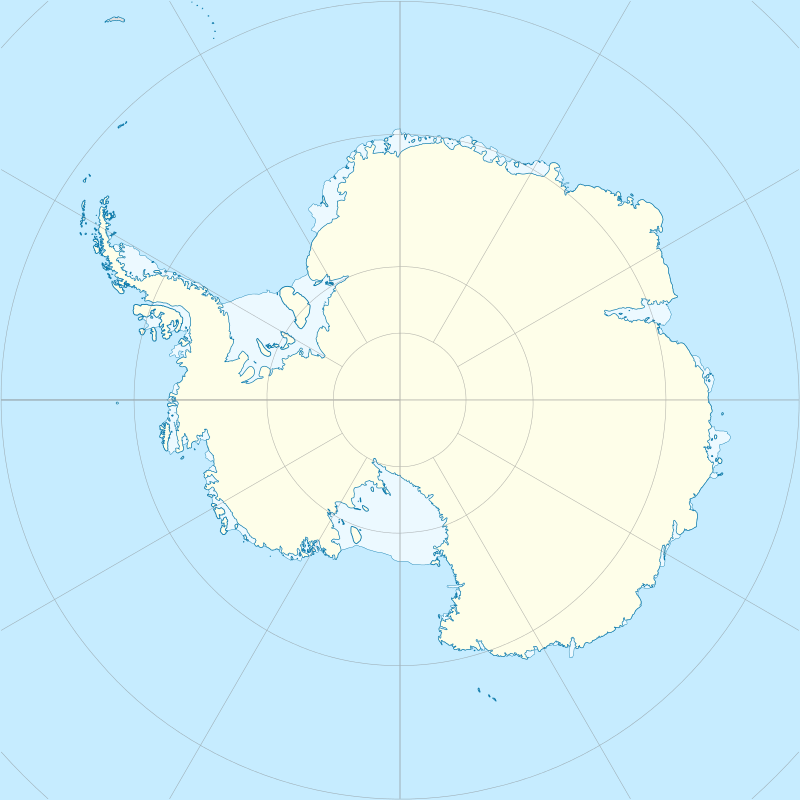Franklin Island (Antarctica)
Franklin Island is an island 13 kilometres (7 nmi) long, lying in the Ross Sea about 130 kilometres (80 mi) east of Cape Hickey, Victoria Land. It was discovered on January 27, 1841 by James Clark Ross, and named for Sir John Franklin, the noted Arctic explorer, who as Governor of Van Diemen's Land (Tasmania) had royally entertained the expedition on its way south at Hobart in 1840.[1]
 Franklin Island Location in Antarctica | |
| Geography | |
|---|---|
| Location | Antarctica |
| Coordinates | 76°5′S 168°19′E |
| Length | 13 km (8.1 mi) |
| Administration | |
| Administered under the Antarctic Treaty System | |
| Demographics | |
| Population | Uninhabited |
Though located just 80 kilometres (50 mi) north of Beaufort Island and appearing at first glance to be part of the same group, Franklin Island is not usually considered to be part of the Ross Archipelago.
Franklin Island is the eroded remains of a shield volcano that formed 4.8 +/- 2.0 million years ago. The vent is now submerged off the east coast.[2]
The island is colonized by a large group of brooding Adélie penguins.
Bernacchi Head (76°8′S 168°20′E) is a precipitous cliff forming the southern extremity of Franklin Island. It was named "Cape Bernacchi" by the British Antarctic Expedition, 1898–1900, for Louis C. Bernacchi, a member of the expedition. The generic name has been changed to "Head" by the Advisory Committee on Antarctic Names to avoid duplication with Cape Bernacchi on the coast of Victoria Land.
The Franklin Shoals (76°0′S 169°0′E) are shoals close to Franklin Island.
See also
- Composite Antarctic Gazetteer
- List of Antarctic islands south of 60° S
- Scientific Committee on Antarctic Research
- Territorial claims in Antarctica
- List of volcanoes in Antarctica
References
- "Franklin Island". Geographic Names Information System. United States Geological Survey. Retrieved 2012-04-06.
- "Franklin Island". Global Volcanism Program. Smithsonian Institution. Retrieved 2018-01-18.
![]()